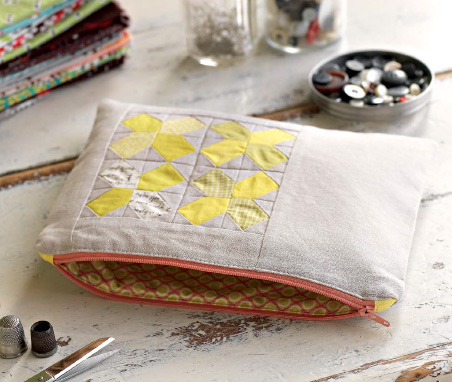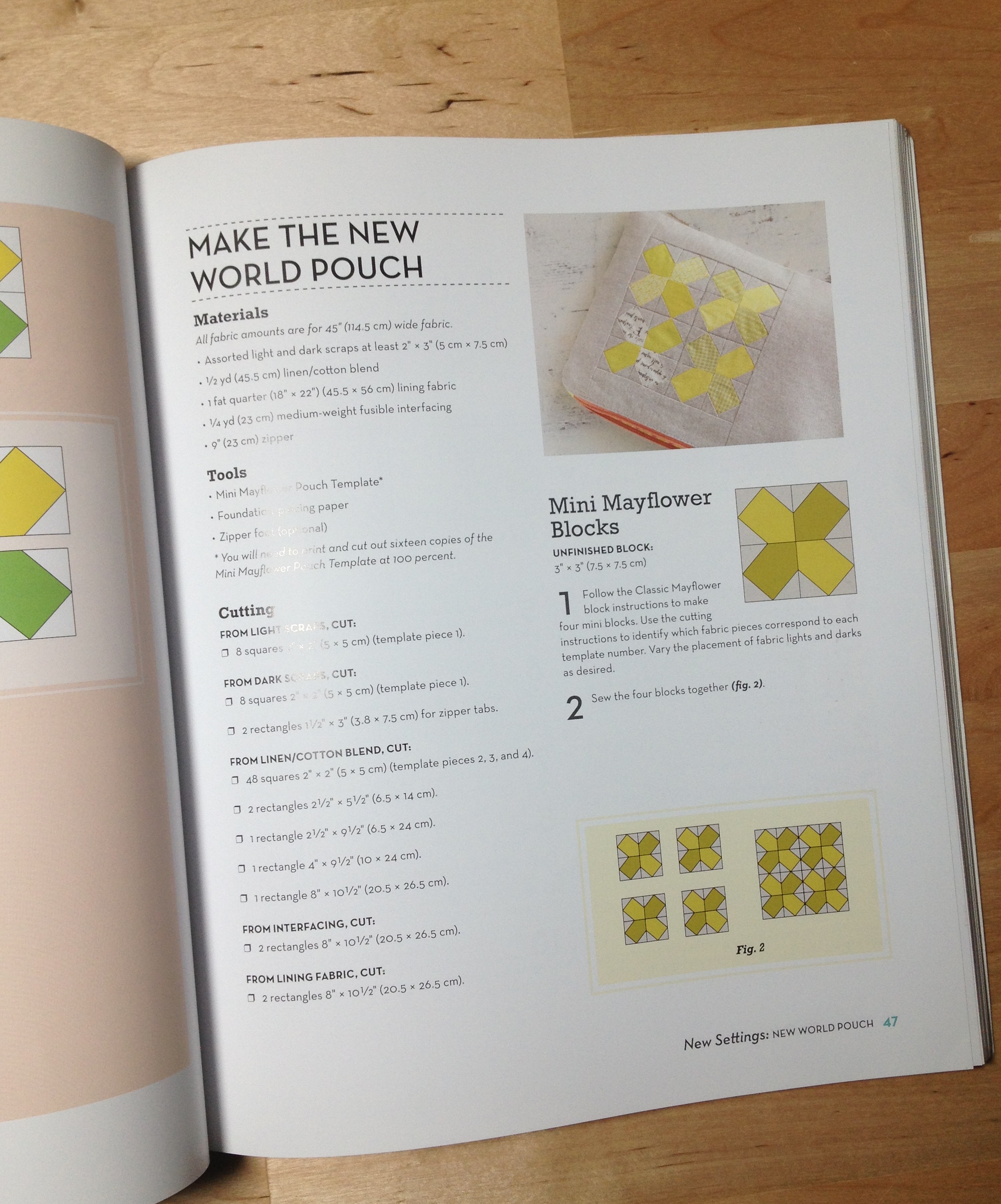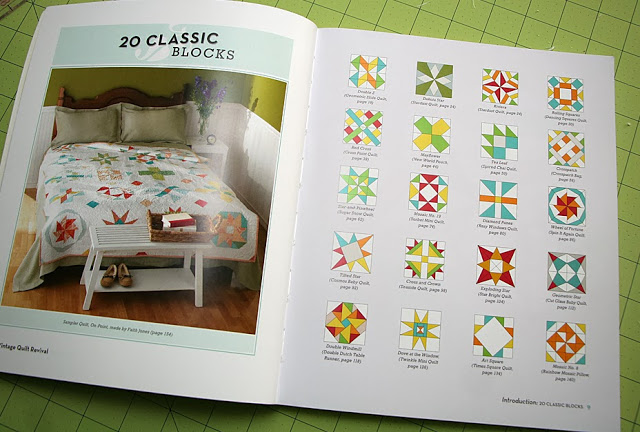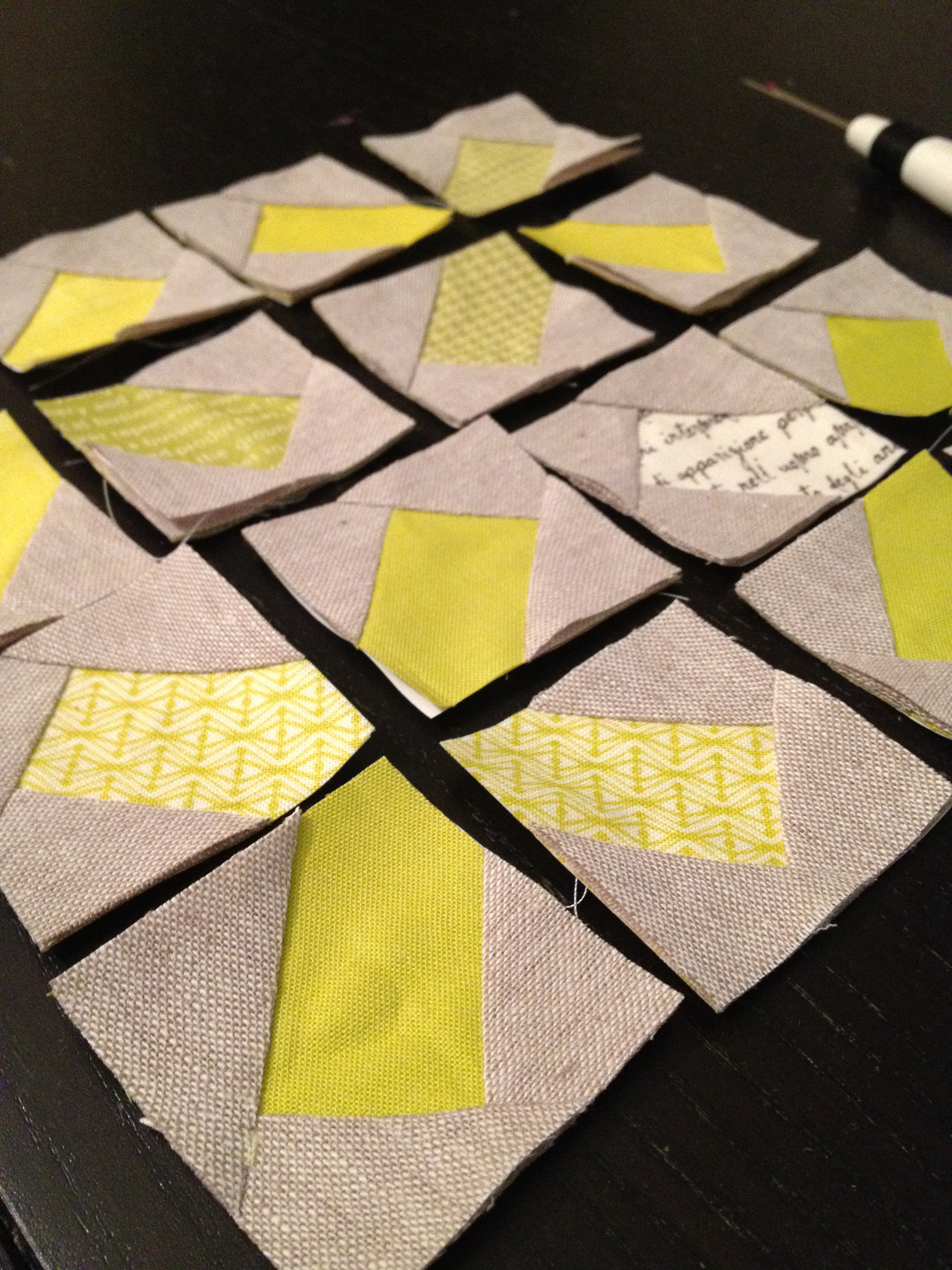Meet the "Vintage Quilt Revival" Projects: New World Pouch
 Today I wanted to talk a little bit about the layout of Vintage Quilt RevivalLee, Faith and I each chose 6 or 7 traditional quilt blocks and then designed a project around each of them, for a total of 20 blocks, 19 projects (Stardust uses 2 blocks), and 3 sampler quilt patterns. Lee, Faith and I each wrote our own chapters, and divided up the various introductions. Although we each have our own voice, the transitions are smooth, so much so that a year later I couldn't tell which sections I wrote!
Today I wanted to talk a little bit about the layout of Vintage Quilt RevivalLee, Faith and I each chose 6 or 7 traditional quilt blocks and then designed a project around each of them, for a total of 20 blocks, 19 projects (Stardust uses 2 blocks), and 3 sampler quilt patterns. Lee, Faith and I each wrote our own chapters, and divided up the various introductions. Although we each have our own voice, the transitions are smooth, so much so that a year later I couldn't tell which sections I wrote!
While many of the projects are quilts, there are a few smaller projects as well. New World Pouch is a zipper pouch based on one of my favorite blocks, Mayflower. This block is paper-pieced, and the book includes a cd with templates, as well as a paper-piecing primer.VQR has a quick introduction and a few pages that cover tools and techniques (such as foundation paper piecing and sewing partial seams.) There is no "how to quilt" section, although there are projects that are suitable for a beginner (Spiced Chai is one of these).The bulk of the book (approximately 130 pages) is divided into three sections: New Settings, New Color Approaches, and Re-Imagined Blocks. New World Pouch falls under the New Settings section. Each block has it's own chapter and project; it also has it's own design note and mini history lesson. I have to admit, the mini history lessons are one of my favorite parts of the book.The 19 different chapters provide 19 different design notes, or strategies, that can be applied to any traditional block. This chapter discusses drastically changing the size of a block, one of my favorite things to do with traditional quilt blocks. You can tell from this process shot that the blocks are pretty small! I used essex linen, and I suggest starching it with such small pieces.
Each block has it's own chapter and project; it also has it's own design note and mini history lesson. I have to admit, the mini history lessons are one of my favorite parts of the book.The 19 different chapters provide 19 different design notes, or strategies, that can be applied to any traditional block. This chapter discusses drastically changing the size of a block, one of my favorite things to do with traditional quilt blocks. You can tell from this process shot that the blocks are pretty small! I used essex linen, and I suggest starching it with such small pieces.
At the end of the book, we provide three different patterns for three different sampler quilts, all of which use the same blocks.Finally, a quick word about making quilts from patterns--your own or someone else's--it is always good to make a test block before you cut out the entire quilt. Perhaps you are more comfortable using bigger or smaller pieces of fabric when you paper piece, or maybe you will change your mind about the placement of color in your blocks. I have cut out an entire quilt and then had to improvise--always better to make a test block!



